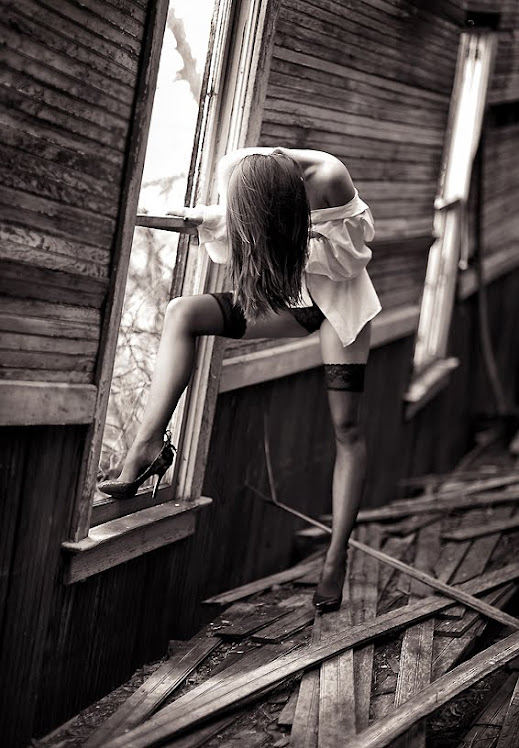I like to compare studio portraits to lake fishing out of a boat, and outdoor on location portraits to mountain stream fishing.
Boat fishing is soooo boring, no adventure, same old stuff not very challenging. The terrain never changes.
Stream fishing, you are always moving, seeing new things with endless possibilities. Different terrain every time.
Each portrait session I shoot I try to find a little different locations and shoot those locations and subjects differently than I have before.
I like to think of my self as a best light photographer. I started out shooting portraits several years ago shooting mostly with a basic softbox and speedlight set up. The results were very nice but I found over time that I don't like messing with lights/equipment.
I have come to understand that I would much rather spend my time working my client and the location to find the best settings and using the best available light.
Usually the person I am photographing arrives with a lot of energy and may sometimes be nervous. The last thing they want to do is stand there while I set up lights, adjust, adjust, adjust. That is no fun for anyone.
Now don't get me wrong sometimes lights are required to get the best out of a subject or a setting. Especially when shooting in a mostly green environment like a park....that is speedlight country....unless you like alien green looking skin. I always have my lights with me and will use them for best effect when necessary.
So since I always shoot the last two hours of the day I always have good light "somewhere", I just need to look for it.
Now assuming good light the first thing I do when assembling my portrait is find a nice setting with a non distracting background. Sounds simple enough......
What I have discovered over time is that I am also subconciously looking for backgrounds with a framing effect for my subject. I almost always shoot portraits with the 85 1.4 at 1.8 or 2, or the 70-200 2.8 at 2.8 or 4 and 200mm. I try to get the most blur possible on my backgrounds this helps greatly in making the background non distracting and allows me to use the colors of the background for subject framing.
Now once we have found our background in good light, it is time to place my portrait subject into the frame.
I already have the photo in my head so I know what the background is going to look like so I pick the best spot for the subject.....which I will probably change a couple times before moving to another spot. I like to try 2 or 3 different looks for a background before I move on.
Next is the pose for the subject. Depending on who I am shooting I try to leave the pose/look to the person I am shooting as much as possible, I tell them to do their thing or some version thereof. Some people need help of course, then I help them out to get into the flow of the location.
Then I take the shot, usually from a few different locations, higher lower a bit from the side. I may adjust the subjects pose or angle. Sometimes very small moves can make a big change in the photo.
I usually shoot 6-8 significant scenes per outing with several casual shots taken along the way as we are looking for the next scene.
So essentially....an experienced professional sees the photo possibilities in their head and then builds the portrait from back to front. A beginner or hobbyist shoots the subject and lets the background fall where it may, essentially creating a portrait built from the front to the back.
For me every portrait session is a search for treasure. I am looking for the light, looking for the backgrounds and all the time working with my subject to have them feeling their best and ready to make the most if it when we find those perfect opportunities to make a great image.
Some shoots you know you killed it before you even get back home and see the photos on the computer screen. When all the elements come together....you just know it.
Those are the days that keep me picking up the gear and heading out there, nothing else like it.

No comments:
Post a Comment